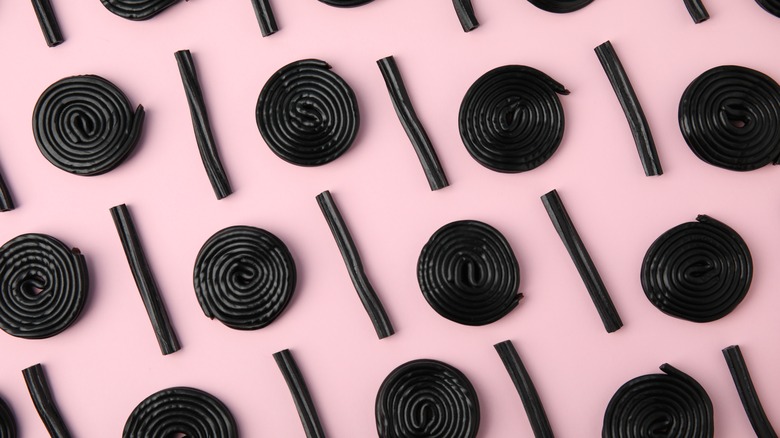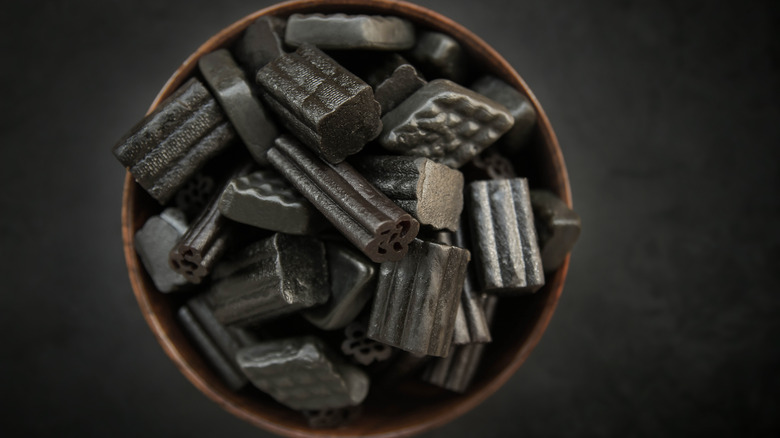Why Adults Should Be Careful Not To Eat Too Much Black Licorice
Just because you're an adult doesn't mean you're not planning to eat as many sweets on Halloween night as the most dedicated trick-or-treater. But whether you get your candy fix by buying a bag straight from the store or you make up the 74% of parents that sneak a treat from their kid's Halloween bounty (via Today.You.Gov), you surely have a favorite candy to celebrate the season with. And while most places in the United States crowned Snickers as their sweet-of-choice (per Food Network), you may find that black licorice is a treat that was seemingly made for the spooky season.
After all, black licorice isn't just a delicious-tasting candy. It's also the color of a witch's hat, which makes it the perfect treat to use in chilling Halloween recipes. But the sad truth is that you'll want to be wary of decorating too many black licorice spider cupcakes (per Growing Up Gabel) or baking a giant batch of black licorice caramels (per Eat The Dead). Because, according to the U.S. Food and Drug Administration (FDA) (via Forbes), if you're an adult, eating too much black licorice may give you more of a scare than Dracula ever could.
Over eating black licorice can result in heart troubles
The Mayo Clinic released a report that stated that the average American eats around 1.2 lbs. of candy on Halloween night. But the FDA (via Forbes) reports that eating too much black licorice can actually send adults to the emergency room. According to the outlet, if adults aged 40 and older eat at least 2 ounces of the candy over a two-week period, their heart can start beating irregularly. Black licorice poses such a health hazard because of a key compound in its ingredient list. Known as Glycyrrhizin, this compound can bring down the body's potassium levels. And low potassium levels are what contribute to irregular heart rates.
But if you just can't get enough of black licorice, there is still a way to enjoy it without the health risk. USA Today reports that Craig Hopp, the natural products expert at the National Center for Complementary and Integrative Health, noted that while you should be wary when eating genuine licorice root candy, you don't have to apply the same caution to most licorices sold at grocery stores. These treats, like Twizzlers, for example, typically aren't made of real licorice root. Instead, they are flavored with anise oil to give them a licorice flavor, making them glycyrrhizin-free. So by ditching real licorice and investing in black licorice-flavored candy, you'll still be able to safely indulge in your favorite treat at Halloween.

